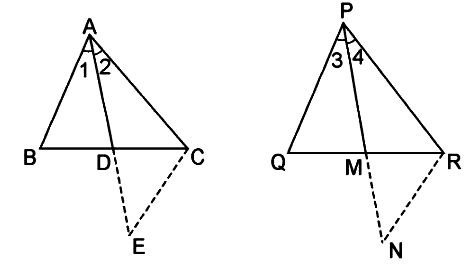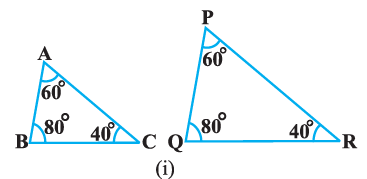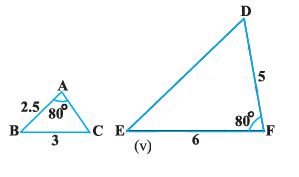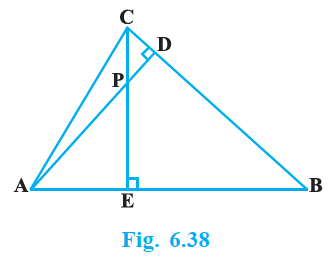Given,
Two triangles ΔABC and ΔPQR in which AD and PM are medians such that
$\dfrac{AB}{PQ} = \dfrac{AC}{PR} = \dfrac{AD}{PM}$
We have to prove, ΔABC ~ ΔPQR
Let us construct first
Produce AD to E so that AD = DE. Join CE, Similarly produce PM to N such that PM = MN, also Join RN.

In ΔABD and ΔCDE, we have
AD = DE [By Construction.]
BD = DC [Since, AP is the median]
and, $\angle ADB = \angle CDE$ [Vertically opposite angles]
ΔABD ≅ ΔCDE [SAS criterion of congruence]
AB = CE [By CPCT] …………………………..(i)
Also, in ΔPQM and ΔMNR
PM = MN [By Construction]
QM = MR [Since, PM is the median]
and, $\angle PMQ = \angle NMR $[Vertically opposite angles]
ΔPQM = ΔMNR [SAS criterion of congruence]
PQ = RN [CPCT] ………………………………(ii)
Now, $\dfrac{AB}{PQ} = \dfrac{AC}{PR} = \dfrac{AD}{PM}$
From equation (i) and (ii)
$\dfrac{CE}{RN} = \dfrac{AC}{PR} = \dfrac{AD}{PM}$
$\dfrac{CE}{RN} = \dfrac{AC}{PR} = \dfrac{2AD}{2PM}$
$\dfrac{CE}{RN} = \dfrac{AC}{PR} = \dfrac{AE}{PN}$ [Since 2AD = AE and 2PM = PN]
ΔACE ~ ΔPRN [SSS similarity criterion]
Therefore,$ \angle 2 = \angle 4$
Similarly,$ \angle 1 = \angle 3$
$\angle 1 + \angle 2 = \angle 3 + \angle 4$
$\angle A = \angle P$ …………………………………………….(iii)
Now, in ΔABC and ΔPQR, we have
$\dfrac{AB}{PQ} = \dfrac{AC}{PR}$ (Already given)
From equation (iii)
$\angle A = \angle P$
ΔABC ~ ΔPQR [ SAS similarity criterion]










